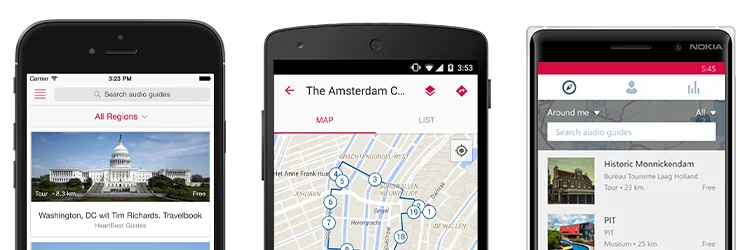Audiotour War in Het Hurkske - Erp
2 sights
- Audio-Tour Zusammenfassung
-
Audio-Tour Zusammenfassung
On September 17, 1944, Operation Market-Garden began. The goal was to capture all bridges over rivers and canals up to Arnhem, allowing for a swift advance into Germany’s industrial Ruhr region. The Allied estimate was that the war would be over by Christmas if they could cripple Germany’s industrial heart.
However, the German army was far from defeated. After a hasty retreat from France, they regrouped in the Netherlands.
Disrupting Allied supply lines along the so-called Corridor, the route from Valkenswaard to Arnhem, was crucial for the German high command.
The bridge over the Zuid-Willemsvaart canal in Veghel was the bottleneck in this Corridor. If the Germans could seize and destroy it, the Allied lifeline would be severed, and Market-Garden would fail. On September 22 and 23, 1944, Veghel faced attacks from both the northwest and southeast. American and British troops in Veghel ultimately repelled the heavy assaults. The weakened German forces attempting to reach the bridge via Gemert and Erp withdrew afterward.
Market-Garden ultimately proved to be a bridge too far for the Allies. Large parts of the Netherlands would not be liberated until May 1945.
During the period from 1939 to 1945, Het Hurkske saw Dutch, German, and English troops come and go. The war left its marks—sometimes visible, but always in memories and stories.
This walking route takes you along these historic sites.
- 1 Forresters house as advanced command post
- 2 German artillery
- 3 US WACO-glider landing
- 4 Location monument
- 5 Position German machine fire
- 6 Blowing up leftover ammunition
- 7 Anti-aircraft guns in the edge of the fores
- 8 Positions along the Aa and in the woods between the Hurkske and the Aa
- 9 The impact of a V2, presumably on December 31, 1944
- 10 Trenches
-
Audio-Tour Zusammenfassung
On September 17, 1944, Operation Market-Garden began. The goal was to capture all bridges over rivers and canals up to Arnhem, allowing for a swift advance into Germany’s industrial Ruhr region. The Allied estimate was that the war would be over by Christmas if they could cripple Germany’s industrial heart.
However, the German army was far from defeated. After a hasty retreat from France, they regrouped in the Netherlands.
Disrupting Allied supply lines along the so-called Corridor, the route from Valkenswaard to Arnhem, was crucial for the German high command.
The bridge over the Zuid-Willemsvaart canal in Veghel was the bottleneck in this Corridor. If the Germans could seize and destroy it, the Allied lifeline would be severed, and Market-Garden would fail. On September 22 and 23, 1944, Veghel faced attacks from both the northwest and southeast. American and British troops in Veghel ultimately repelled the heavy assaults. The weakened German forces attempting to reach the bridge via Gemert and Erp withdrew afterward.
Market-Garden ultimately proved to be a bridge too far for the Allies. Large parts of the Netherlands would not be liberated until May 1945.
During the period from 1939 to 1945, Het Hurkske saw Dutch, German, and English troops come and go. The war left its marks—sometimes visible, but always in memories and stories.
This walking route takes you along these historic sites.
Bewertungen
Kostenlose izi.TRAVEL-App herunterladen
Erstellen Sie Ihre eigenen Audio-Touren!
Die Verwendung des Systems und der mobilen Stadtführer-App ist kostenlos.


